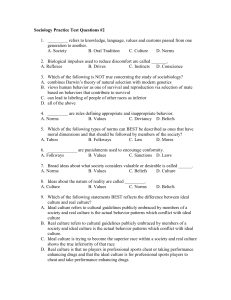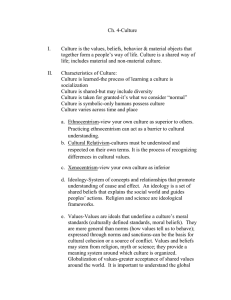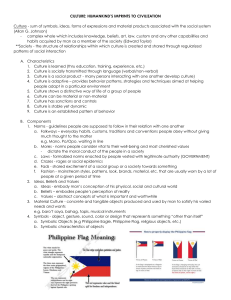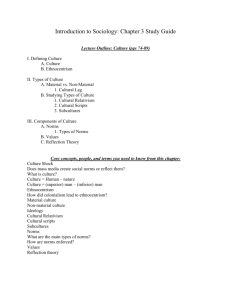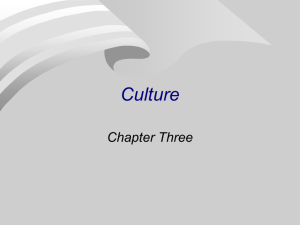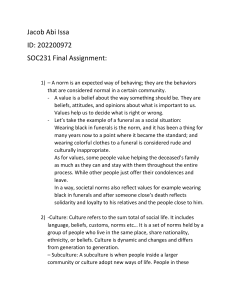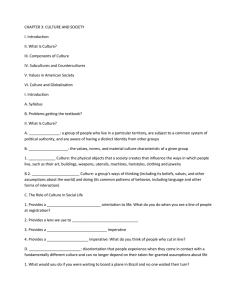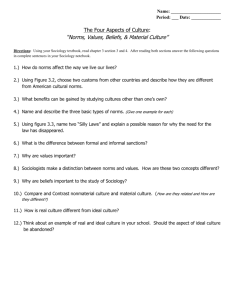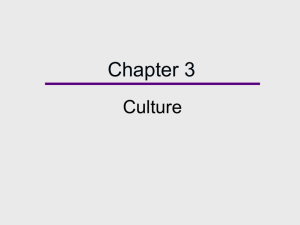Sociology of Culture
advertisement
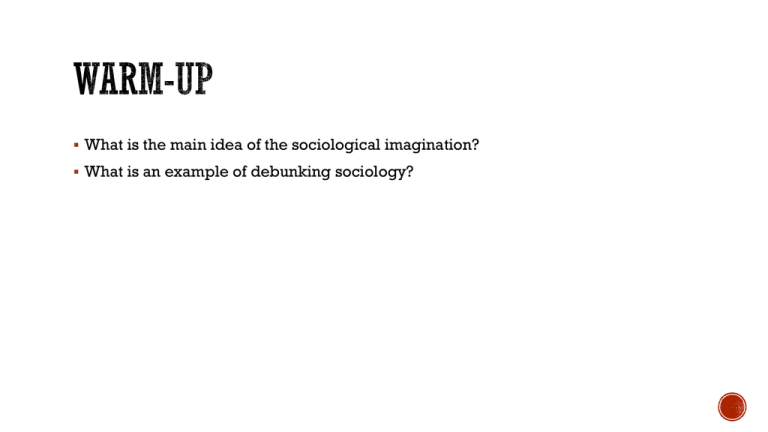
What is the main idea of the sociological imagination? What is an example of debunking sociology? Is the complex system of meaning and behavior that defines the way of life for a given group or society. It is both material and non-material: Material: its buildings, art, tools, toys, print and broadcast media, and other artifacts. Non-material: norms, laws, customs, ideas, and beliefs. Culture is shared: Although it often includes great diversity Culture is learned: The process of learning a culture is called socialization Culture is taken for granted: It is what members of the culture consider “normal” Lack of communication across cultures about these taken-for-granted features can have neg. consequences. Culture is symbolic: Symbols are things or behaviors to which people give meaning. Culture varies across time and place: (cultural relativism) Is the perspective that allows people to understand and judge cultural practices in context. Is There a Difference? Language: Sapir-Whorf hypothesis: maintains that language determines what people think and perceive because language forces people to perceive the world in certain terms. Norms: Are the specific cultural expectations that govern behavior in situations. (Implicit or Explicit) Folkways: general standards of behavior adhered to by a group Mores: strict norms that control moral and ethical behavior help held through laws and rules. Social Sanctions: are mechanisms of social control that enforce norms. Beliefs: Stemming from religion, myth, folklore, or science, provide a meaning system around which culture is organized. Values: The abstract standards in a society or group that define ideal principles, can be basis for cultural cohesion or a source of conflict. Dominant Culture: The culture of the most powerful group in society, the cultural form that receives the most support from major institutions and that constitutes the major belief. Subcultures: Whose values and norms of behavior differ from those of the dominant culture, share some elements of the dominant culture and co-exist with it. Countercultures: Subcultures created as a reaction against the values of the dominant culture. Ethnocentrism: The habit of seeing things only from the point of view one’s own group. The Globalization of Culture: The diffusion of a single culture throughout the world. Includes the beliefs, practices, and objects that are part of everyday traditions. Influence of the Mass Media: Has the power to shape public perceptions Racism and Sexism in the Media: Mass media promote narrow definitions of who people are and what they can be.


